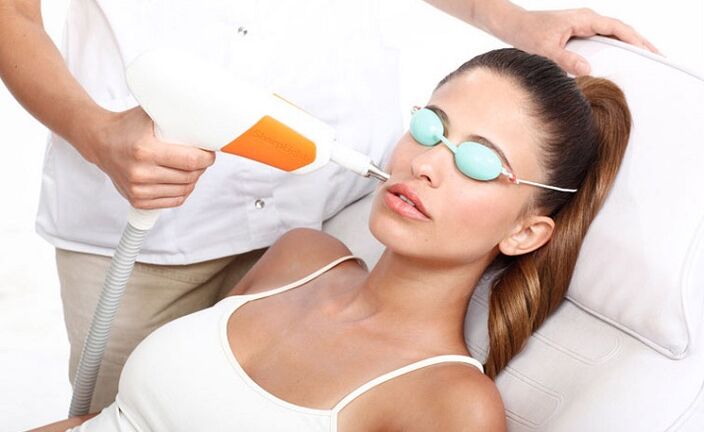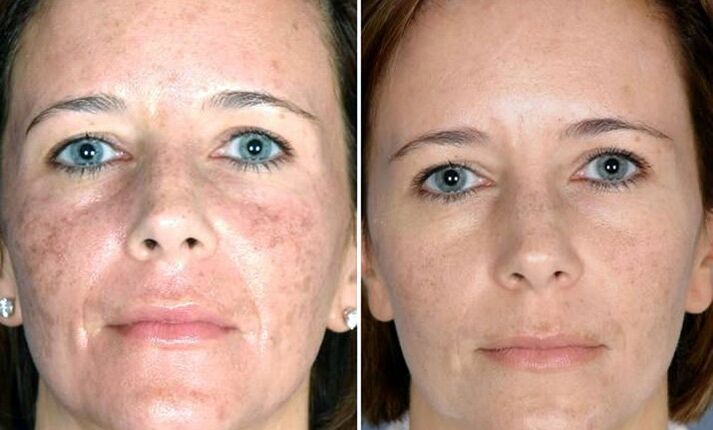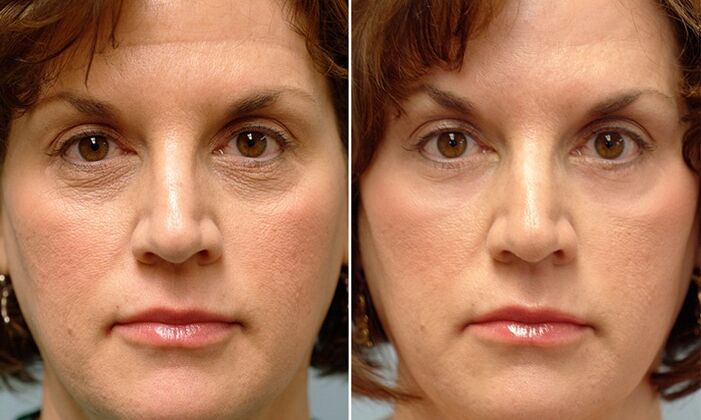From the time of Cleopatra to the present day, there is not a single representative of the fair sex who would not want to prolong youth and beauty in her skin. Modern medical science never ceases to amaze innovations in the field of cosmetology and offers a variety of anti-aging and surgical procedures.
Particularly popular are the methods that allow you to get rid of the external symptoms of aging without resorting to a syringe or Botox syringe. Elimination laser rejuvenation is currently the second fastest and safest way to combat skin aging.

What is a laser fracture and how does it rejuvenate?
When the laser hits the skin, it becomes a range that spreads to depth. Active healing (rejuvenating) processes begin, which provide the desired cosmetic effect. This method is also known in cosmetology that rejuvenates the skin.
If the same solvent is divided into many micro-beams, a so-called fractional converter is obtained. Such a beam will no longer act on the skin as a whole, but as a break in the small net. Burns after refractory laser heating are located in the form of a large number of micro-points among intact skin. This significantly reduces the shock of the operation (and soreness as well) and allows the skin to heal faster.
After exposure to the solvent, intact healthy skin cells begin to function actively with the formation of collagen and elastin, which provide the skin with a supple and youthful appearance.
Variation of light heat dissipation
Ablative
Under the influence of laser radiation, water evaporates from the tissues and forms an "open" microscopic wound around which damaged (burned) cells are located.
The treatment has a noticeable lifting effect, but there is a risk of infection entering the deep layers of the skin.
Non-ablative
Radiation is used, which leaves the epidermis intact, so that evaporation from the tissues and the formation of "open" wounds do not occur.
The beautician chooses the method of regenerating parts individually, depending on the condition and type of skin.
Effects and benefits of refractory laser heat
The main difference between the technology and all other methods is the optimal balance between safety and efficiency.
Highlights:
- ability to affect any part of the body (including décolleté, neck, eyelids)
- a wide range of clues;
- physiology (the damage area is only 20% of the entire area treated with solvent);
- short healing time (2-7 days);
- anesthesia method - application;
- the possibility of using it on individuals with dark skin (since it does not cause pigmentation);
- duration of the result (from one year to several years).
The drawback is insufficient knowledge of all aspects of the effects of laser fractures, as the technology itself has recently appeared.
Suggestion for replacement of parts:
- wrinkles (of any depth and location);
- reduction in the elasticity of the skin;
- enlarged pores;
- dyes;
- acne;
- spider veins;
- scar (after surgery, remnants of acne);
- stretch marks (striae), including on the skin of the mammary glands.
Properties of conducting fracturing laser thermal
A few days before the phototherapy operation, the beautician may prescribe (if mentioned) antibiotics or antivirals in prophylactic doses.
The day before the part replacement, it is necessary to completely exclude exercise, smoking and alcohol consumption.
Before the operation, the skin is thoroughly cleansed and treated with a special anesthetic cream. In some cases, anesthesia is not required at all.
The effect of the solvent is felt as "tingling" or "tingling". The duration of the procedure (from a few minutes to an hour) and their number are chosen separately. After laser treatment, a soothing nourishing cream is applied to the skin.
Skin follow-up:
- Moisturize the skin with a special cream 2-3 times a day (within 2 weeks);
- protect your skin from UV radiation for 2 months (do not visit the sunbed, use sunscreen with a protection factor of at least 30);
- do not use peel and scrub (within 2 weeks);
- do not use cosmetics containing salicylic acid and retinol (within 2 weeks);
- do not wear compression underwear for several days (if refractory phototherapy was performed on the body);
- limit (exclude) smoking and alcohol during treatment (reduce skin rejuvenation).

On average, the rehabilitation period lasts up to 3 days after refractory laser heating and up to 7 days after heat reduction.
Skin changes after the operation
For 1-3 days after a high solvent risk, redness, discomfort and slight inflammation of the skin may persist. If this condition is poorly tolerated, painkillers and skin coolers may be used.

After a few days, a bronze skin color (tanning effect) may appear which lasts for up to 2 weeks and disappears on its own. Within 5-7 days after part renewal, dryness and peeling of the skin is noticed.
Undesirable consequences and contraindications for phototherapy
After improper care of the skin after the operation, if the recommendations or technical errors of the laser treatment are not followed, the following complications are possible:
- redness of the skin lasting more than 3 days;
- edema at the site of exposure lasting more than 2 days;
- exacerbation of herpes infection (if previously in the treatment area);
- infection (appearance of streptoderma);
- erosion, burns in the affected area;
- determine bleeding;
- overcolouring.
In order to prevent undesirable consequences, action on the renewal of laser changes is carried out after examination and exclusion of possible contraindications.
Absolute contraindications:
- pregnancy and lactation;
- tendency to form keloid scars;
- acute infectious processes (including herpes);
- oncology;
- condition after radiation, chemotherapy;
- epilepsy;
- significant disorders of the immune system;
- taking retinoid-containing medicines;
- psoriasis (atopic dermatitis) with exacerbation.
Relative:
- nephrology;
- diabetes;
- inflammation at the level of exposure;
- the patient's inability to follow the beautician's recommendations;
- mental illness;
- hypersensitivity to anesthetics;
- autoimmune diseases;
- fresh tan (visit to the solarium last month);
- recent rejuvenation procedures (affecting the deep layers of the skin - last three months, superficial - within 10 days).
Reviews of uninterrupted rejuvenation and images of patients from the "before" and "after" series generally impair the effectiveness and small shock of this method of preserving youth.

Remember!The procedure can only be performed by specialists (surgeons or dermatologists) who have received training and are licensed to work with laser equipment. Physician fitness is the key to your beauty!














































































